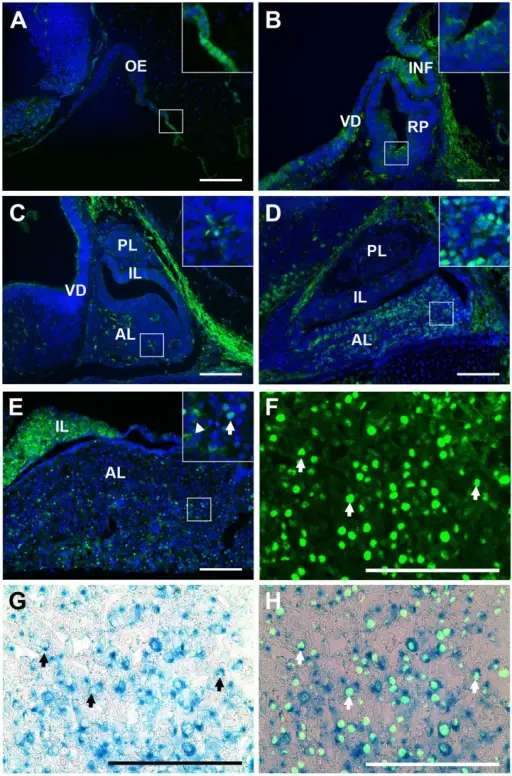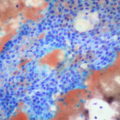Posterior Pituitary Gland Pathology Video Posterior Pituitary Gland The hypothalamus produces oxytocin and antidiuretic hormone (ADH), which are subsequently sent by axons to the posterior pituitary for release. The distal tubules and collecting ducts of the kidney are affected by…
Posterior Pituitary Gland Pathology Study Guide

FOXO1 is present in the nuclei of pituitary cells at an increasing frequency as development progresses. Immunohistochemistry for FOXO1 (green) was performed on midsagittal pituitary sections. (A) FOXO1 is present in the developing pituitary by e10.5. Nuclear FOXO1 is apparent where the invaginating Rathke’s pouch is joined to the oral ectoderm that will form the mouth (see inset). (B) By e12.5 FOXO1 is present almost entirely in the cytoplasm of pituitary cells. (C) A few pituitary cells contain nuclear FOXO1 at e14.5. (D) At e18.5 the developing pituitary contains a mostly nuclear FOXO1. (E) In adults, FOXO1 is present in the anterior and intermediate lobes of the pituitary gland, but not in the posterior lobe (data not shown). In the adult pituitary FOXO1 is primarily nuclear (inset, arrow). Some cytoplasmic FOXO1 (inset, arrow head) is also present. (F) Immunohistochemistry for FOXO1. (G) Beta-galactosidase staining of pituitary from Foxo1+/LacZ mice identifies cells in which the endogenous Foxo1 promoter is active. (H) An overlay of immunohistochemical staining for FOXO1 (green) and β-galactosidase staining of pituitary from Foxo1+/LacZ mice (blue). (F–H) Arrows highlight examples of co-localized cells. Pictures are taken at 200X (A–E) or 630X (F–H). Insets are magnified 600X. Scale bars represent 100 µm. All cell nuclei were marked with DAPI (A–E, blue). Oral ectoderm (OE), infundibulum (INF), ventral diencephalon (VD), Rathke’s pouch (RP), posterior lobe (PL), intermediate lobe (IL), anterior lobe (AL). Forkhead Box O1 is present in quiescent pituitary cells during development and is increased in the absence of p27 Kip1: Majumdar S, Farris CL, Kabat BE, Jung DO, Ellsworth BS - PloS one (2012). Not altered. CC.


